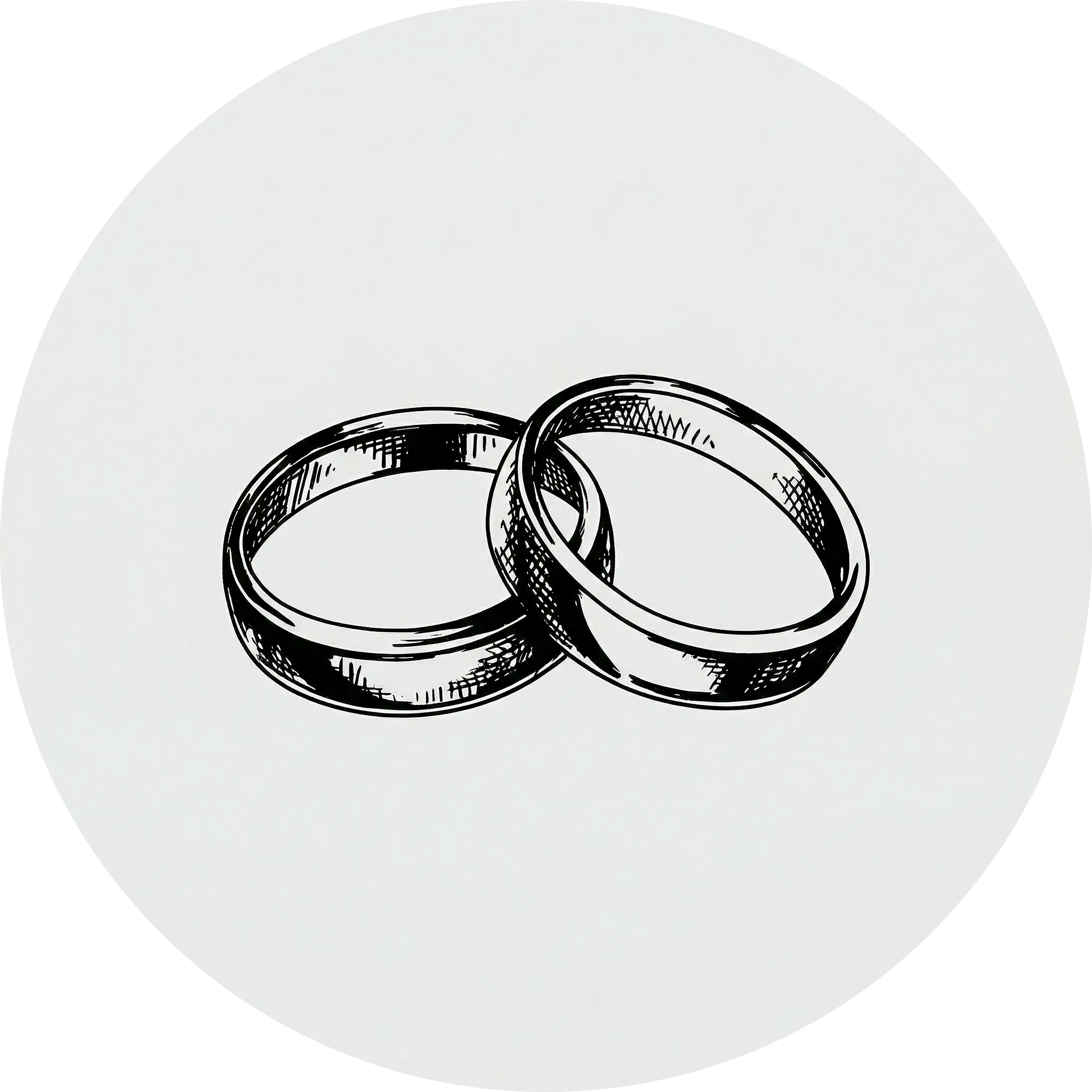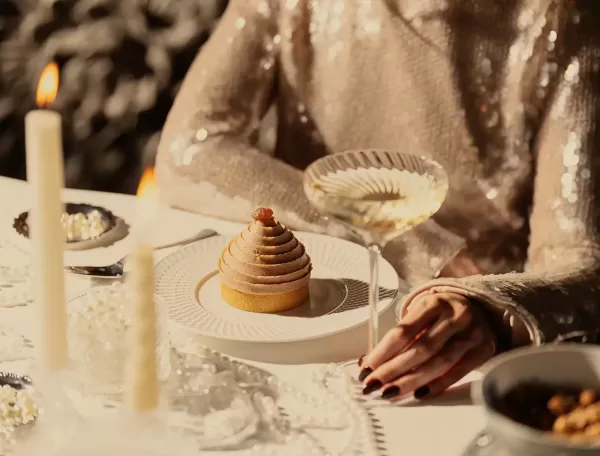Of course, everyone knows about diamonds. They're one of the most valuable materials on earth, thanks to their rarity, durability and beauty – qualities which have meant they frequently symbolise romance and have been traditionally used to signify betrothal for centuries.
Except, hardly any of that is true. Indeed, even the commonly held definition of a diamond has been called into question since the 2018 ruling by the Federal Trade Commission (FTC), which declared that a diamond could be legally defined as 'a mineral consisting essentially of pure carbon crystallised in the isometric system' – whether this occurred naturally or through manufactured processes. In other words, a diamond doesn't have to be formed over billions of years in the earth. If the same conditions are recreated in a laboratory, the resulting 'cultivated diamond' is identical to a mined diamond – 'chemically, physically and optically'.


Depending on who you are, this represents a considerable challenge – even an affront – or an incredible opportunity. But, after years of being sniffily dismissive of them, it seems the luxury world is finally beginning to sit up and take notice of synthetic diamonds. LVMH recently invested $90 million in Israeli-based lab-grown diamond (LGD) pioneer Lusix. At the same time, David Duncan-Smith, former managing director of Prada UK and Louis Vuitton UK, was named as the new non-executive chairman at The Diamond Lab. As the name suggests, The Diamond Lab, founded by Jamie Amelia Patel, offers an alternative to mined diamonds and aims to 'cultivate a space that encourages significant dialogues on earth-kind diamonds and the future of eco-luxury.'
But before we delve into ethics, market forces and eco-luxury, let's clarify what we're talking about.
What is a lab-grown diamond?
Lab-grown diamonds (LGDs) are nothing new. People have been trying to recreate the exact conditions that make them form in the earth since it was first discovered that diamonds were made from pure carbon in 1797. This was finally successfully achieved in the 1950s, with Howard Tracy Hall, a physical chemist working for General Electric, generally credited as creating the first synthetic diamond in December 1954, in a scheme codenamed 'Project Superpressure'.
The name alludes to the High-Pressure High-Temperature (HPHT) system employed, which is still one of today's most common techniques for manufacturing manmade diamonds. This involves taking a tiny carbon 'seed' that is then exposed to extreme heat (around 1,500°C) and pressure (1.5 million pounds per square inch) in a chamber, mimicking the process that produces diamonds in the bowels of the earth. From here, it then grows into a diamond within the laboratory – usually within six to ten weeks, as opposed to the estimated 1–3 billion years a 'natural' diamond takes to grow. It is then cut and polished in the same way as any other diamond is.
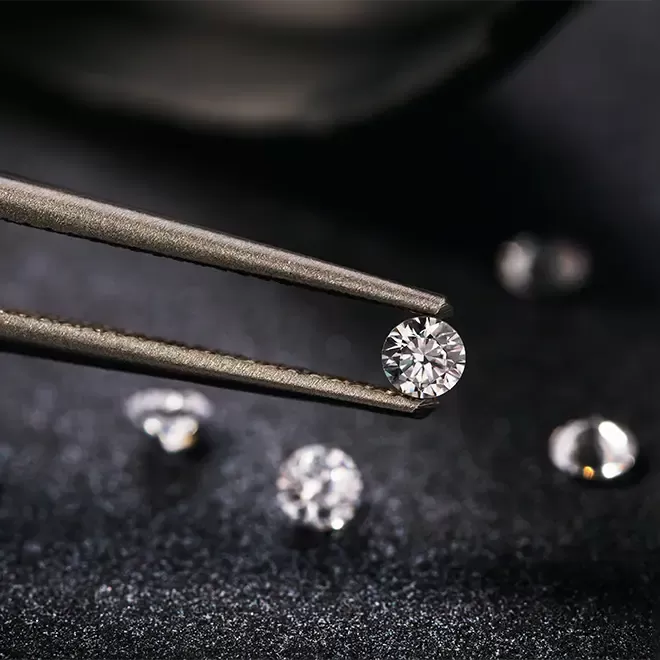
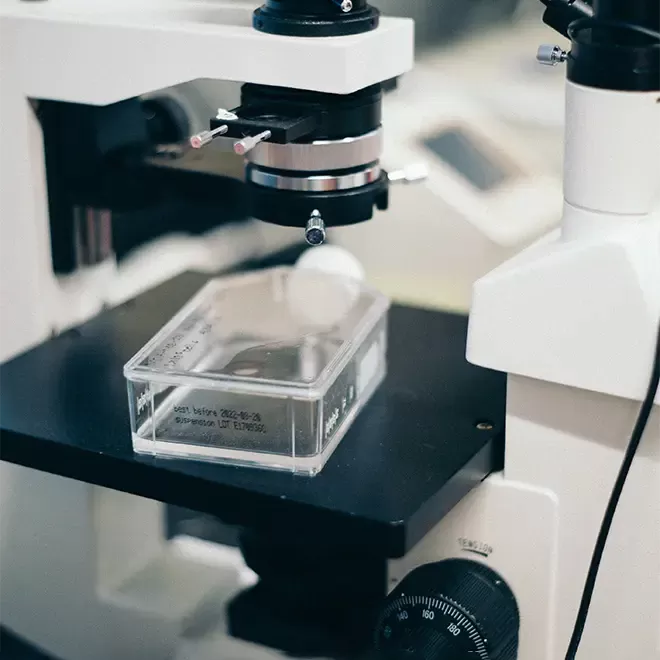
It's worth noting that, since then, a new way of growing diamonds in laboratory conditions has been discovered. This technique is known as Chemical Vapour Deposition (CVD) and involves placing the carbon seed in a sealed chamber filled with carbon-rich gas and heating it to about 800°C, which makes the gas begin to 'stick' to the seed, growing it atom by atom.
As they are formed from the same material (carbon) and exposed to the same pressure and heat, LGDs are identical to their natural equivalents for all intents and purposes. In the fascinating Netflix documentary, Nothing Lasts Forever (directed by Jason Kohn), the dry, world-weary gemologist Dusan Simic is asked, 'If a diamond of the same or better quality can be created for much cheaper, why should we still mine for them?' His reply is a disarming one: 'It's a good question! Some people want something that really belongs to the earth. Something that is made by God, not in some lab. But from a gemological point of view, there is no difference.'
Why does this matter?
Simic's reply begs several questions. Firstly, why should something 'made by God' be considered intrinsically better than a manmade version, however indistinguishable the two are? Secondly, is the price the only determining factor here?
These two questions are fundamental to the dilemmas faced by the modern diamond industry. Let's address the first one first.
Following the 2018 FTC ruling, some
long-established battle lines were drawn in the sand. The Natural Diamond
Council (NDC) – sought to paint LGDs as cheap, manufactured and (by their
self-imposed standards) poor substitutes of natural diamonds, which it loftily
pronounced to be 'inherently valuable, rare and precious', because they are
'crafted by nature over millions of years'. No one disputes the latter
definition, but questions are raised about natural diamonds' inherent value and
rarity.
Understanding the value of diamonds
To address these, we need to rewind a little – and reconsider those first assumptions that we all have about diamonds: their rarity, beauty, and those centuries-old engagement traditions.
Firstly, are diamonds rare? The short answer is no. Of course, they are valuable gems. But any statement about their relative scarcity should be taken with a generous pinch of (rock) salt. In actuality, diamonds are amongst the most common gems, with current diamond reserves estimated at around 1.3 billion carats (Russia alone is believed to hold almost half the total number). Rumours that the earth's diamond supplies are running out are just that: rumours. New mining projects are expected to generate around 172.3 million carats in 2025.
As for value, it is hard to definitively compare different gems due to variations in size and quality. However, single-carat diamonds are priced lower than rubies, emeralds, and sapphires. But – to answer the second part of the question above – price isn't the only determining factor regarding the popularity of diamonds. They are imbued with a certain romance that adds to their perceived value. In short, they are desirable. But why is that? Of course, they are beautiful, but so are rubies, emeralds and sapphires.
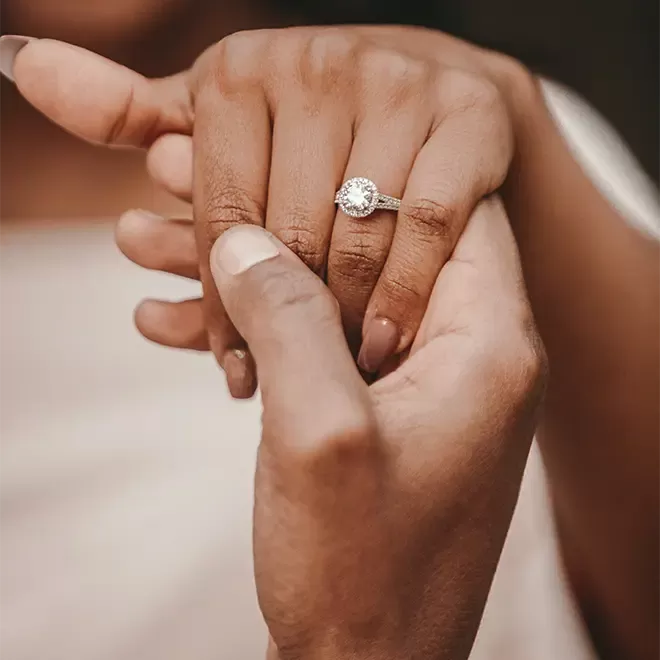

Diamonds, as we know, have long been associated with love – it is tradition to offer one's fiancé a diamond engagement ring as a token of your undying, eternal commitment – because, as we know, a diamond is forever. But again, the truth is a little less crystal-cut. Betrothal rings have existed at least since Roman times, and there are examples of diamond rings being used for this purpose going back centuries: the first documented case being Archduke Maximilian of Austria, who wore a diamond ring in 1477 to mark his engagement to Mary of Burgundy.
It wasn't actually until the 20th century that the practice became commonplace, thanks initially to a marketing campaign by De Beers in 1938, launched as a response to the diamond price collapsing during the Great Depression. A decade later, in 1947, De Beers came up with the slogan 'A diamond is forever', and the modern practice of offering a diamond ring when asking for someone's hand in marriage was born.
Notably, this coincided almost perfectly with the advent of lab-grown diamonds. But if there was a perceived threat to the De Beers cartel's stranglehold on the diamond market back then, they saw it off handsomely: between 1939 and 1979, sales of diamonds in the US rose from $23 million to $2.1 billion. There is no doubt they did a brilliant marketing job – from Marilyn Monroe singing Diamonds Are A Girl's Best Friend in Gentlemen Prefer Blondes to the 'three-month salary rule' (the received opinion that a man should spend three months' worth on an engagement ring ) – De Beers spearheaded all. But is it all marketing?
Speaking on camera for Nothing Lasts Forever, De Beers CEO Stephen Lussier readily admits that his company was the principal player in establishing these cultural norms but simply puts it down to good storytelling. 'If you want people to really absorb information, you need to be able to tell it to them in a way that is memorable,' he says. Of course, it is good business to create demand for your product. And when that demand is fuelled by concepts of romance and of shiny treasures formed over billions of years and hidden in the earth's crust, it stands to reason that you wouldn't want the fairy tale sullied by cheaper, more prosaic versions that scientists have created.
The end of a romance?
Of course, there is more to the mined diamond story than often meets the eye – which explains why later generations have fallen out of love with them. Finding a diamond buried underground might sound magical when phrased that way. Still, today's customer base is well aware of the realities of mining: the social and environmental cost makes for less fanciful reading. Tales of blood diamonds, poor working conditions, the cycle of poverty, and the ecological impact of digging giant holes in the ground all throw up questions of ethical value to counterpoint the monetary value. Suddenly, the story isn't about the transformation of carbon into gems but of carbon footprints.
In this context, LGDs are no longer the cheap, less alluring alternative but the solution to a growing concern.


Why is this happening now?
Put simply, because the customer demands it. Millennials and Generation Z – the vast majority of the market for diamond engagement rings because of their age – are moving away from conventional diamonds. According to a 2018 MVI Marketing LLC (MVI) study, nearly 70% have considered buying LGDs for engagement rings, and the figure has only grown in the subsequent five years.
This younger audience is less persuaded
by the arguments for spending more on mined diamonds and more convinced for the
reasons not to: a combination of price, environmental reasons
and transparency – because, let's face it, however unromantic 'it was grown in
a lab' sounds, it's undoubtedly less murky. Funnily enough, traceability – once
a cornerstone of the traditional diamond industry's case against LGDs – has
become vital for precisely the opposite reason. The language was once about
being confident that batches of natural diamonds hadn't been 'tainted' by
synthetic versions. In contrast, today's customer is often more just as
concerned about how a mined diamond found its way to market.
The bottom line
But if you really want to understand why the luxury world is suddenly falling for LGDs after years of friction, there is a straightforward explanation: the market is heading that way. The profit margins may be less, the origin stories may be more mundane, but the product appeals to the consumer. A report by the Antwerp World Diamond Centre (AWDC) estimates that the LGS segment of the international diamond market is increasing by between 15% and 20% – so it's only natural to want to be a part of it.
If De Beers is prepared to appear on camera to discuss the phenomenon, it's clear that it can read the writing on the wall. Moreover, it now offers its own lab-grown collection, Lightbox Laboratory-Grown Diamonds. And the way it talks about it is fascinating. Having firmly insisted there is a clear point of difference between the two products for almost a century, De Beers presents its LGD range very much as a diffusion line, with price points to match – and it talks about it, as Lussier says, 'in a way that is honest about what it is… but equally what it isn't.'
Sally Morrison, CMO of Lightbox, elucidates further. 'The difference is that while a natural diamond is made over billions of years and comes from deep in the ground, a lab-grown diamond is literally made in a factory over a period of about two weeks. It's something less precious, maybe for travel jewellery…'


A shiny future?
It's a start, but there are signs that the industry is moving faster and is prepared to be bolder in its uptake of LGDs. One thing everybody is clear about is that while lab-grown may be manmade, or synthetic, there is nothing fake about them. The jewellery designer Aja Raden, whose sardonic delivery forms the centrepiece of Nothing Lasts Forever, does not doubt the quality of the diamonds emerging from laboratories today. She says, 'They can be made like nature intended, but never quite managed.'
With the news of LVMH's investment, together with The Diamond Lab introducing a brick-and-mortar retail experience that rubs shoulders with the luxury elite on London's New Bond Street this November (and enjoying serious financial backing in the process), there is little doubt that LGDs will continue to cultivate their corner of the diamond field until it becomes significant.
Indeed, there are signs that the 'if you can't beat them, join them' approach epitomised by De Beers doesn't go far enough. The LGD company Skydiamond aims not simply to be carbon neutral but climate positive by 'removing more greenhouse gases from the atmosphere than you are producing'. Founded by the entrepreneur and environmentalist Dale Vince (who also founded the Global Green Energy Movement in 1995 with the launch of Ecotricity), Skydiamond has its own clever marketing slogan, Born from the sky, which alludes to the fact that its manufacturing process uses atmospheric carbon as its raw material. As such, it seeks to remove CO2 from the atmosphere on a planetary scale, storing it in the permanent form of a diamond.
Addressing counterclaims that the burgeoning LGD industry also adds to greenhouse emissions due to the intense temperatures and pressures involved in their manufacture, Skydiamond goes on the offensive, listing numerous examples of the ecological and social damage wrought by traditional diamond mining and pointing towards the dream of a new, shiny future where diamond production 'actually benefits the planet'.
Too good to be true – or a romance that will end happily ever after? The story of lab-grown diamonds is only just beginning.
Want to stay up to date with the latest in luxury? As the world’s leading luxury concierge service, we spend time securing you access to the best of the best across the world, so you can spend more time doing the things you love. Discover more about membership here.
